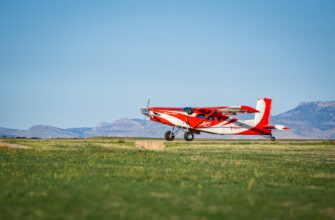What is Farm Automation? The Future of Agriculture
Farm automation (often colloquially called “farm atom”) represents the technological revolution transforming traditional agriculture. By integrating robotics, AI, and IoT devices, this approach automates labor-intensive tasks like planting, irrigation, and harvesting. The global smart farming market is projected to reach $25 billion by 2027, signaling a seismic shift toward data-driven agriculture that maximizes yields while minimizing resource waste.
Core Components of a Farm Automation System
Modern farm automation relies on interconnected technologies:
- Robotics & Drones: Autonomous tractors for precision plowing and drone fleets for aerial crop monitoring
- Sensor Networks: Soil moisture detectors, weather stations, and livestock health trackers
- AI Analytics Platforms: Machine learning algorithms that process field data to predict crop diseases
- Automated Irrigation: Smart sprinklers adjusting water flow based on real-time soil conditions
- Livestock Tech: Automated feeders and milking systems with biometric tracking
5 Transformative Benefits of Farm Automation
- Boosted Productivity: Automated systems operate 24/7, increasing output by up to 60% according to USDA studies
- Resource Conservation: Precision irrigation reduces water usage by 30-50% compared to traditional methods
- Labor Optimization: Addresses agricultural labor shortages by handling repetitive tasks
- Enhanced Sustainability: Minimizes chemical runoff through targeted pesticide application
- Data-Driven Decisions: Real-time analytics enable proactive responses to crop threats
Implementing Automation: Your Step-by-Step Guide
Step 1: Assess Needs
Identify pain points like water waste or harvest delays. Start small with single-task robots or sensors.
Step 2: Infrastructure Audit
Ensure reliable power sources (solar options recommended) and Wi-Fi coverage across fields.
Step 3: Pilot Program
Test systems on 5-10 acre plots. Popular entry points: automated irrigation controllers or drone scouting.
Step 4: Data Integration
Connect devices through centralized platforms like FarmLogs or John Deere Operations Center.
Step 5: Scale Gradually
Expand automation based on ROI data, prioritizing high-impact areas first.
Frequently Asked Questions (FAQs)
Q: Is farm automation affordable for small farms?
A: Absolutely. Modular systems like automated drip irrigation start under $500. Many USDA grants subsidize 50-75% of costs.
Q: How does automation handle unpredictable weather?
A: AI cross-references hyperlocal weather data with soil sensors to auto-adjust irrigation and trigger protective measures like frost fans.
Q: What maintenance do robotic systems require?
A> Most need seasonal calibration and software updates. Leading brands offer remote diagnostics and 3-year service packages.
Q: Can legacy equipment integrate with new tech?
A> Yes, through retrofit kits. Tractors can add auto-steering for $15,000-$20,000 – far cheaper than new machinery.
Q: Does automation eliminate farming jobs?
A> It shifts roles toward tech management. The FAO reports automation creates higher-skilled positions in robotics maintenance and data analysis.
Embracing the Automated Future
Farm automation isn’t science fiction – it’s today’s most practical solution for sustainable, profitable agriculture. By starting with targeted implementations and leveraging government incentives, farms of all sizes can harness this technology. The “farm atom” revolution delivers what matters most: optimized resources, resilient harvests, and a blueprint for feeding our growing planet.








